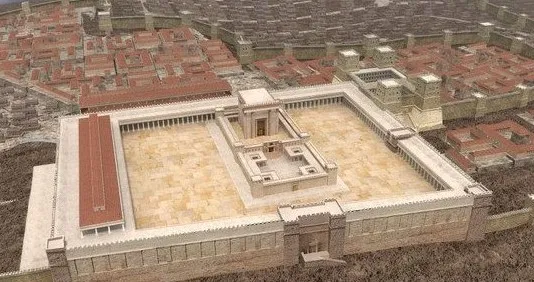Delve into the captivating tale of The Historical Legend Of Taboot-E-Sakina And Haikal-E-Sulemani, uncovering its rich history, symbolism, and significance. Explore the mystical realms of faith and heritage in this intriguing narrative.
 |
| Taboot-E-Sakina |
Introduction:
Embark on a journey through time and spirituality as we unravel the enigmatic tale of Taboot-E-Sakina and Haikal-E-Sulemani. This historical legend, steeped in religious lore and cultural significance, captivates hearts and minds with its profound symbolism and timeless narrative. Join us as we delve deep into the origins, symbolism, and enduring legacy of this mystical artifact and sacred monument.
The Historical Legend Of Taboot-E-Sakina And Haikal-E-Sulemani: A Symbol of Faith and Tradition
Taboot-E-Sakina and Haikal-E-Sulemani stand as revered symbols of faith and tradition, revered by believers for centuries. These relics hold profound significance in Islamic history and culture, serving as tangible connections to the divine and reminders of sacred narratives. Let's explore their origins and the legends surrounding them.
Why Haikal-e-Sulemani Was Made?
 |
| Haikal-E-Sulemani |
It is accepted that the Taboot was gave to with such a status because of God's will. As per prevalent thinking, it isn't that if the Taboot was given a holy status so all taboots are to be loved, however the Taboot-e-Sakina was given extraordinary influence because of God's will. The Israelis utilized Taboot-e-Sakina as their qiblah. Why Haikal-e-Sulemani (Solomon's Temple) was made hykal solomani It is accepted that when the Taboot-e-Sakina was in Hazrat Dawood (A.S's) care, he chose to make a manor, a sanctuary to ensure it and the Prophets' resources. The sanctuary took so much time that it couldn't be finished during Hazrat Dawood (A.S's) life. The sanctuary finished in the time of Hazrat Soleyman (A.S) and was named the Haykel-e-Soleimani.
The Taboot-e-Sakina was kept secure and stayed there until the individuals of 'Babul' known as Babylonia assaulted the Haykel-e-Soleimani and crushed it. Some accept that the individuals of Babylon took the Taboot with them, while others trust it was taken to the sky. In any case, it was later on that the Israelis raised the Haykel-e-Soleimani once more. In a little while, the Haykel (sanctuary) was annihilated for the subsequent time, this time by the Romans, who set up a Christian church in its place. Hazrat Umar Farooq (R.A) visited Palestine and couldn't discover the Haikal. He at that point supplicated somewhat further from the congregation and that was the place where Masjid-e-Aqsa was constructed.
the mosque to construct the Haikal-e-Sulemani once more.
 |
| Masjid-e-Aqsa |
Presently the Yahoodis guarantee that where Masjid-e-Aqsa is has a place with them. Despite the fact that the entire locale is viewed as consecrated by the Muslims. The Yahoodis accept that it is important to forfeit the mosque to construct the Haikal-e-Sulemani once more. The Yahoodis additionally accept that the excess mass of the Haikal, where an entryway is likewise present, will clear route for their 'Lord' before the Day of Judgment, so they cover their kin before the door. They accept when their 'Ruler' will leave the entryway, all the dead will wake up behind him. As indicated by Muslim conviction, that 'Ruler' of the Yahoodis will be Dajjal.
Unraveling the Origins: Mystical Beginnings
Delving into the origins of Taboot-E-Sakina and Haikal-E-Sulemani unveils a tapestry of mystical beginnings shrouded in legend and myth. According to Islamic tradition, Taboot-E-Sakina refers to the casket or chest containing relics associated with Prophet Muhammad's descendants, particularly his granddaughter Sakina bint Husayn. Haikal-E-Sulemani, on the other hand, refers to the legendary Solomon's Temple, believed to have housed the Ark of the Covenant and revered by multiple faiths.
The Sacred Journey: From Antiquity to Modernity
Across the annals of history, the journey of Taboot-E-Sakina and Haikal-E-Sulemani spans continents and epochs, leaving an indelible mark on the hearts of believers. From the ancient lands of the Middle East to the far reaches of the Indian subcontinent, these sacred artifacts have traversed diverse landscapes, carrying with them tales of divine providence and spiritual enlightenment.
Symbolism and Significance: A Testament to Faith
Taboot-E-Sakina and Haikal-E-Sulemani embody profound symbolism and spiritual significance within Islamic tradition. As tangible manifestations of divine grace and prophetic lineage, these relics inspire awe and reverence among believers, serving as focal points for prayer, reflection, and spiritual devotion.
Guardians of Tradition: Custodianship and Legacy
Throughout the ages, custodianship of Taboot-E-Sakina and Haikal-E-Sulemani has been entrusted to devout custodians and revered institutions, ensuring their preservation and continued veneration. From ancient sanctuaries to modern-day shrines, the legacy of these sacred relics endures, perpetuating the traditions and teachings they symbolize.
Miracles and Mysteries: Divine Manifestations
The legends surrounding Taboot-E-Sakina and Haikal-E-Sulemani are replete with tales of miracles and divine manifestations, captivating believers with accounts of supernatural occurrences and providential interventions. From healing the sick to averting calamities, these relics are believed to wield spiritual power and divine favor, eliciting fervent prayers and supplications from devotees.
The Historical Legend Of Taboot-E-Sakina And Haikal-E-Sulemani: FAQs
- What is the historical significance of Taboot-E-Sakina and Haikal-E-Sulemani?
- Are there any miraculous events associated with these sacred relics?
- How are Taboot-E-Sakina and Haikal-E-Sulemani venerated by believers?
- Who are the custodians of these sacred artifacts?
- Can non-believers visit the shrines or sites associated with Taboot-E-Sakina and Haikal-E-Sulemani?
- What role do these relics play in contemporary Islamic practice?
Conclusion:
In conclusion, The Historical Legend Of Taboot-E-Sakina And Haikal-E-Sulemani transcends time and space, weaving together strands of faith, tradition, and mysticism in a rich tapestry of spiritual heritage. As we unravel the mysteries surrounding these sacred relics, we are reminded of the enduring power of belief and the timeless resonance of divine grace. Let us continue to cherish and honor these symbols of faith, drawing inspiration from their storied past and profound significance in Islamic tradition.
============================================
So this was the story of Taboot-E-Sakina Hope you Guys Enjoyed
Here We Have Another Topic For You.









In the article that you have any questions please let me know